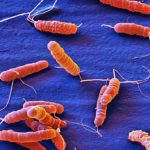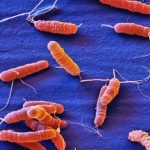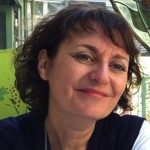Link to Pubmed [PMID] – 12110633
Mutagenesis 2002 Jul;17(4):353-9
In previous experiments, i.p. injection of the 5 nitronaphthofuran derivative 7-methoxy-2-nitronaphtho[2,1-b]furan (R7000) to lacI transgenic Big Blue mice led to an increase in the mutant frequency (MF), especially in the caecum and the small intestine. In the present work, the in vivo genotoxicity of R7000 in these two target organs was further investigated. Big Blue mice were treated with a single daily i.p. injection of R7000 of 0.05-0.5 mg/day for five consecutive days and killed 28 days later. These treatments led to significant increases in MF of 1.8-, 3- and 5.4-fold at 0.1, 0.2 and 0.5 mg/day R7000, respectively, in the small intestine. In the caecum, a mutagenic effect, of 4.5-fold, was only observed at the highest dose. DNA adduct formation and MFs resulting from R7000 were also analysed in parallel at various times after the last injection. R7000 led to 14 and seven different nucleotide modifications in the caecum and small intestine, respectively. Three hours after the final injection the level of induced DNA adducts was 10 times higher in the caecum than in the small intestine. From 3 h to 5 days after the final injection, 93 and 58% of DNA adducts disappeared in the caecum and small intestine, respectively. The resulting MF values were similar when comparing the two organs. Analysis of the R7000-induced mutation spectrum in the caecum showed that single G:C and large, > or =3 bp deletions and GC–>CG transversions were the first induced mutations at the end of the treatment. Fifteen days later, the R7000 mutation specificity characteristics already reported in Escherichia coli and in the small intestine of Big Blue mice were evident in the caecum, with the two major events being GC–>TA transversions and deletions of one G:C base pair. In both organs, a relationship between the decrease in R7000-DNA adducts and induction of MF was evident. However, the efficiency of this compound in damaging DNA was not correlated with the capacity of DNA lesions to lead to mutations. Some discrepancies in the R7000 genotoxic effects between the two organs were observed, which may be attributable to differences in the metabolic activation pathway of the compound, as well as to DNA repair proficiency in each tissue.


